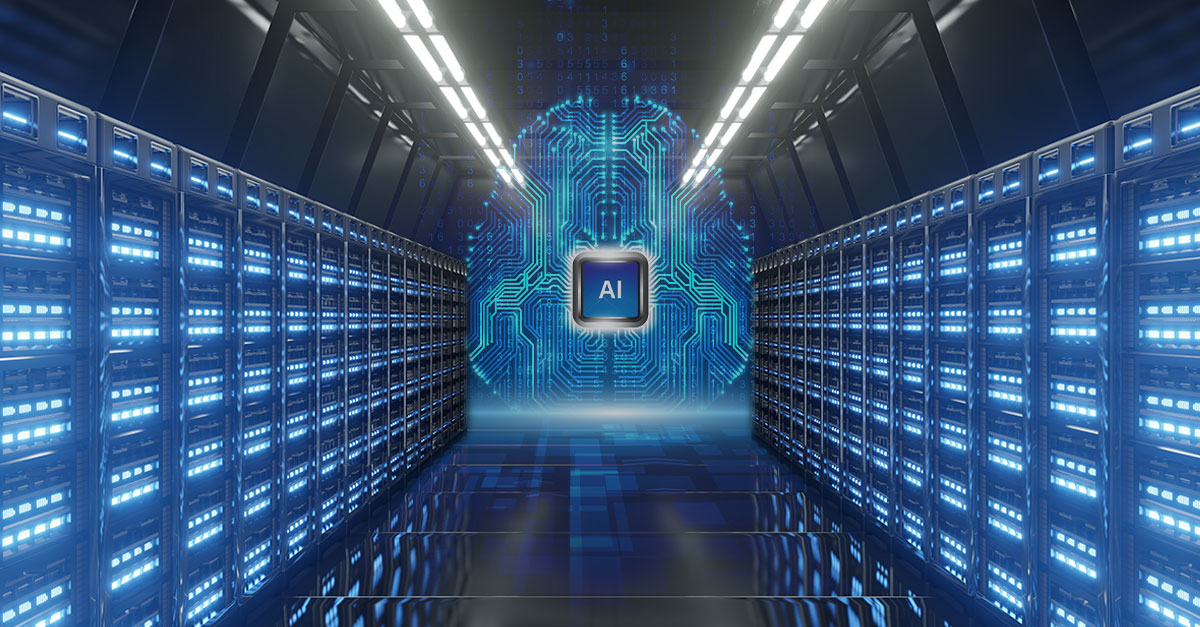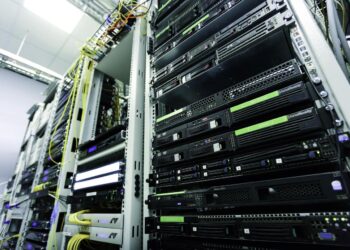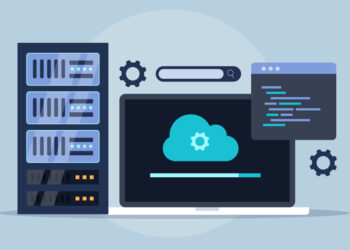The modern digital landscape is characterized by an insatiable demand for faster, more reliable, and increasingly sophisticated computing. At the heart of this digital ecosystem lie servers, the unsung heroes that power everything from social media platforms to critical financial transactions and complex scientific research. As data volumes explode and computational workloads become more intricate, traditional methods of server management and optimization are reaching their limits. This is where Artificial Intelligence (AI) steps in, transforming server performance from a reactive process into a proactive, intelligent, and highly efficient operation. AI is not just a tool; it’s rapidly becoming the very brain of modern server infrastructure, enabling unprecedented levels of performance, efficiency, and security.
The Ever-Growing Demands on Server Infrastructure

Enterprises across all sectors are grappling with a surge in data and application complexity. Hyperscale data centers, distributed edge deployments, and hybrid cloud environments all contribute to a dynamic and challenging operational landscape. Manual tuning and traditional monitoring tools, while once sufficient, simply cannot keep pace with the velocity of data, the intensity of computational tasks, and the variability of workload profiles seen today. The need for more intelligent, dynamic, and autonomous optimization techniques has become paramount.
AI, with its inherent capabilities in pattern recognition, predictive modeling, and real-time adaptive learning, is uniquely positioned to address these challenges. It introduces a level of granularity, speed, and insight that far surpasses human capabilities, fundamentally reshaping how server performance is managed and maximized. From intricate workload balancing to sophisticated predictive failure mitigation and intelligent adaptive cooling, AI is ushering in a new era of server efficiency and reliability.
The Pillars of AI-Driven Server Optimization
AI’s impact on server performance is multifaceted, touching upon virtually every aspect of server operation. Let’s delve into the key areas where AI is making a significant difference:
A. Predictive Analytics and Proactive Maintenance
One of the most transformative applications of AI in server management is its ability to enable predictive maintenance. Traditionally, server maintenance was either reactive (fixing issues after they occurred) or preventive (scheduled maintenance regardless of actual need). Both approaches lead to inefficiencies, unexpected downtime, and inflated costs. AI-powered predictive maintenance shifts this paradigm entirely.
AI algorithms, leveraging machine learning (ML), IoT sensor data, and big data analytics, continuously monitor vast amounts of operational data from servers in real-time. This data includes everything from CPU utilization, memory consumption, disk I/O rates, and network throughput to temperature readings and power draw. By analyzing these metrics, AI can:
- Identify Early Signs of Degradation: AI can detect subtle anomalies and deviations from normal operating patterns that might indicate an impending hardware failure, software glitch, or performance bottleneck long before human operators would notice.
- Forecast Equipment Failure: Machine learning models can predict the likelihood of component failure, such as hard drives, power supplies, or memory modules, based on historical data and current operational conditions. This allows for planned maintenance, minimizing disruptive unscheduled downtime.
- Optimize Maintenance Schedules: Instead of rigid schedules, AI can recommend precisely when maintenance is needed, allowing IT teams to replace components or perform updates at the most opportune time, thus reducing maintenance costs and extending the lifespan of hardware.
- Automate Responses: In some advanced systems, AI can even trigger automated failover mechanisms, shifting workloads to redundant systems, or initiate self-healing protocols to correct minor issues autonomously, further enhancing uptime.
The economic benefits are substantial. Unplanned downtime can cost businesses thousands or even millions of dollars per hour. By predicting failures and enabling proactive intervention, AI significantly reduces these costs, safeguards reputation, and ensures continuous availability, which is critical for cloud services, banking, e-commerce, and many other industries.
B. Intelligent Resource Allocation and Workload Management
Modern servers handle a diverse array of workloads, from standard web serving to compute-intensive AI model training and real-time data processing. Efficiently allocating resources (CPU, RAM, network bandwidth, storage I/O) across these varied demands is crucial for optimal performance. Manual resource allocation is often guesswork, leading to underutilization of some resources and bottlenecks in others. AI, through sophisticated workload management, provides a dynamic and adaptive solution:
- Real-time Workload Balancing: AI algorithms can analyze incoming traffic and existing workloads in real-time, dynamically distributing tasks across available servers and virtual machines to prevent any single server from becoming overwhelmed. This ensures consistent performance even during peak loads.
- Predictive Scaling: By analyzing historical traffic patterns and predicting future demand, AI can proactively scale resources up or down. For instance, before a known surge in online activity (e.g., a major sales event), AI can automatically provision additional server instances, ensuring seamless user experience. Conversely, during low-demand periods, it can scale down resources to conserve energy and reduce operational costs.
- Optimizing Resource Utilization: AI identifies inefficiencies in resource usage, such as idle CPU cycles or underutilized memory, and reallocates them to workloads that need them most. This maximizes the return on investment for server hardware.
- Container and Microservices Orchestration: In environments leveraging containers and microservices, AI can intelligently orchestrate these components, placing them on the most suitable servers and optimizing their communication paths for minimal latency and maximum throughput.
- AI for AI Workloads: Ironically, AI is also crucial for managing AI workloads themselves. Training complex deep learning models requires immense computational power. AI-driven workload managers can efficiently distribute these training tasks across GPU clusters, optimize data pipelines, and manage memory usage to accelerate model development and deployment.
C. Enhanced Security and Anomaly Detection
Server security is a constant battle against evolving threats. Traditional signature-based security systems are often reactive, identifying threats only after they are known. AI, however, offers a proactive and adaptive layer of defense for servers:
- Behavioral Anomaly Detection: AI continuously learns the “normal” behavior patterns of servers, applications, and users within the network. Any deviation from these baselines – such as unusual login attempts, unexpected data transfers, or abnormal system calls – is flagged as a potential threat. This allows for the detection of zero-day exploits and sophisticated attacks that might bypass traditional security measures.
- Predictive Threat Intelligence: By analyzing vast datasets of cyber threat intelligence, AI can identify emerging attack patterns and vulnerabilities, enabling security teams to patch systems or implement countermeasures before an attack occurs.
- Automated Threat Response: Upon detecting a suspicious activity, AI can initiate automated responses, such as isolating a compromised server, blocking malicious IP addresses, or rolling back configurations, thereby minimizing the impact of a breach.
- Intrusion Detection and Prevention Systems (IDPS): AI enhances IDPS by providing real-time pattern matching and improving deception-based security. AI can create spoofing server instances or databases to mislead attackers, track their activity in sandboxed environments, and automate responses without affecting actual systems.
- Incident Forensics Acceleration: When a security incident occurs, AI can rapidly correlate logs from various sources (applications, firewalls, databases, user access histories), detect hidden relationships between incidents, and generate forensic timelines, significantly speeding up the investigation and reporting process.
- Vulnerability Management: AI can analyze server configurations and software versions to identify potential vulnerabilities, recommend patches, and even prioritize patching efforts based on the severity of the vulnerability and the criticality of the server.
D. Optimized Energy Efficiency and Cooling

Data centers are massive consumers of energy, primarily due to the power required for servers and their cooling systems. As AI workloads become more prevalent, energy consumption is projected to rise further. AI plays a critical role in mitigating this impact and enhancing energy efficiency:
- Dynamic Cooling Optimization: AI can analyze real-time data from temperature sensors, airflow monitors, and humidity levels within the data center. Based on this data, it can dynamically adjust cooling systems (CRAC units, chillers, fans) to maintain optimal temperatures with minimal energy consumption. For example, Google’s DeepMind famously used AI to reduce cooling energy consumption in its data centers by 40%.
- Power Capping and Throttling: AI can intelligently cap the power consumption of individual servers or racks based on their current workload and overall data center energy limits. This prevents overconsumption during peak periods and helps maintain stable operating temperatures.
- Workload Scheduling for Energy Savings: AI can schedule non-critical workloads to run during off-peak hours when electricity prices are lower or when renewable energy sources are more abundant, further reducing operational costs and carbon footprint.
- Hardware Efficiency Optimization: AI can identify underperforming hardware or servers that are consuming disproportionately high amounts of power for their output, signaling the need for upgrades or decommissioning.
- Thermal Management Prediction: By predicting hot spots and airflow issues, AI enables proactive adjustments to server rack layouts or cooling infrastructure, preventing thermal runaway and ensuring stable operations.
E. Automated Server Maintenance and Management
Beyond predictive maintenance, AI is enabling higher levels of automation across various server management tasks, freeing up IT staff to focus on more strategic initiatives:
- Configuration Optimization: Machine learning algorithms can analyze historical performance data and suggest optimal configurations for servers, reducing response times, improving efficiency, and minimizing human errors.
- Automated Patching and Updates: AI can track vendor patch releases, cross-reference them with active threat feeds, and schedule non-critical patches during low-traffic times, ensuring systems are always up-to-date with minimal disruption.
- Log Analysis and Troubleshooting: AI can sift through massive volumes of server logs from various sources (operating systems, applications, network devices), identify correlations, detect root causes of issues, and even suggest solutions, significantly accelerating troubleshooting and problem resolution.
- Capacity Planning: By analyzing historical growth trends and predicting future capacity needs, AI helps data center managers make informed decisions about hardware procurement and infrastructure expansion, preventing both over-provisioning and under-provisioning.
- Compliance and Risk Analysis: AI can continuously monitor server configurations and activities to ensure adherence to regulatory compliance standards (e.g., GDPR, HIPAA) and internal security policies. It can also assess and report on potential risks in real-time.
The Future Landscape
The integration of AI with server technology is still evolving, and the future promises even more profound changes:
- Edge AI Servers: As businesses increasingly process data closer to its source, AI servers deployed at the edge will become crucial. These compact, powerful servers enable real-time analytics and decision-making with minimal latency, critical for applications like autonomous vehicles, smart cities, and industrial automation. Edge AI servers will also enhance data privacy by processing sensitive information locally.
- Quantum Computing Integration: While still in its nascent stages, the eventual integration of quantum computing components with traditional AI servers could exponentially accelerate computational speed and efficiency. This could unlock solutions to problems currently considered intractable, revolutionizing complex AI algorithms.
- AI-Optimized Data Centers: Future data centers will be designed from the ground up with AI in mind. This means advanced cooling systems, greater reliance on renewable energy sources, and highly modular, adaptable designs that can quickly scale to meet evolving AI demands. Automation and AI will manage entire data center operations, from power and cooling to workload balancing.
- Hardware-Software Co-Design: We will see a tighter integration between AI software and specialized server hardware (e.g., ASICs, FPGAs, next-generation GPUs, and custom AI chips like Google’s TPUs or IBM’s Power11). This co-design will lead to unprecedented performance gains for AI workloads.
- Autonomous Operations: The ultimate vision for AI in server management is full autonomy. AI systems will eventually manage entire server fleets, predicting and preventing issues, optimizing performance, and adapting to changing conditions with minimal human intervention. This shift will transform IT operations, allowing human experts to focus on innovation rather than routine maintenance.
Challenges and Considerations
While the benefits are immense, the widespread adoption of AI in server management also presents challenges:
- Data Quality and Volume: AI models require vast amounts of high-quality data to learn effectively. Ensuring data integrity, consistency, and sufficient volume is crucial.
- Complexity of Implementation: Integrating AI into existing IT infrastructure can be complex, requiring specialized skills in data science, machine learning engineering, and system integration.
- Security of AI Systems: The AI systems themselves become potential targets. Securing AI models from adversarial attacks and ensuring their ethical use is paramount.
- Cost of AI Infrastructure: Deploying and maintaining AI-powered solutions can be capital-intensive, requiring significant investment in specialized hardware and software.
- Interpretability and Explainability: Understanding why an AI made a particular decision (e.g., to throttle a server or recommend a maintenance action) can be challenging, which can be a barrier to trust and adoption in critical environments.
Conclusion
Artificial Intelligence is no longer a futuristic concept but a vital, tangible force in the evolution of server technology. From predicting failures and optimizing resource allocation to enhancing security and driving energy efficiency, AI is fundamentally reshaping how servers operate. As organizations continue to rely heavily on data and computational power, AI-driven server performance will be a key differentiator, enabling businesses to maintain competitive advantages, reduce operational costs, and deliver superior digital experiences. The journey toward fully autonomous, intelligent server infrastructures is well underway, promising a future where computing power is not just abundant, but also optimized, resilient, and inherently smart. Embracing AI in server management is not merely an option; it’s a strategic imperative for any enterprise looking to thrive in the data-driven world.










